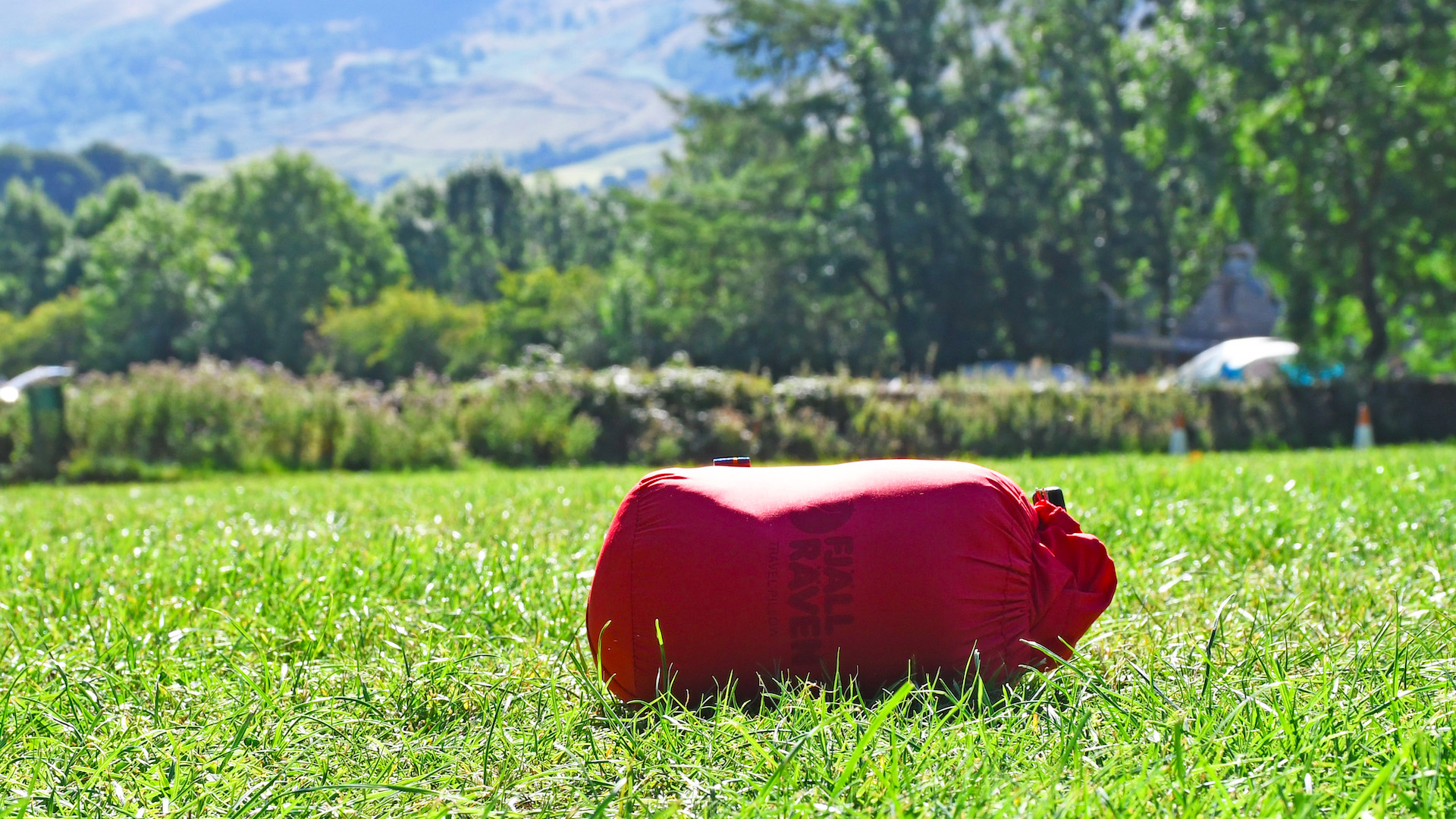Advnture Verdict
Ideal for backpackers and bikepackers who seek to travel light but nevertheless appreciate a bit of comfort overnight, and who don’t get on with inflatable pillows. Travellers will find it useful too.
Pros
- +
Lightweight
- +
Comfortable
- +
Packable
- +
Robust
Cons
- -
No recycled material
- -
Heavier & bigger than inflatable pillows
- -
One color only
You can trust Advnture
Fjällräven Travel Pillow: first impressions
Making room in your backpack for a non-inflatable pillow like the Fjällräven Travel Pillow means either leaving behind something else – like an item of clothing or some food – or simply grinning and bearing the extra weight and bulk. Either way, there has to be a compelling reason to carry a luxury product like this, and the Fjällräven Travel Pillow may just be compelling enough to rank alongside the best camping pillows.
• List price: $20 (US) / £20 (UK) / €22.95 (EU)
• Materials: Polyester (100%)
• Weight: 135g / 4.8oz
• Dimensions: 25cm x 30cm / 10in x 12in
• Color: Red
• Compatibility: Perfect for backpacking, bikepacking and international travel
Because if you really value your shut-eye, and find that glorified balloons and repurposed fleece-filled stuff-sacks just don’t offer you a level of comfort you crave, then this camping pillow offers a comfy alternative.
Made with a lightweight “Supreme Microloft” polyester material, this handy travel and camping pillow pops out of its integrated stuff sack to provide a soft and comfortable place to lay your head after a long day on the trails, or when you’re in transit.
When you’re not camping, it can also be used under your bum to supply a bit of comfort on big bus or car journeys when you’re travelling, or as a headrest for long-haul flights.

Fjällräven Travel Pillow: in the field
I trail tested the Fjällräven Travel Pillow during a bikepacking adventure in the Peak District, when pack space was at a real premium. One of the more minimalist camping pillows I’ve used, it weighs very little and packs down to about the size of a mango (although you can compress it further when stuffing it into a rucksack pocket or carry-on bag).
The integrated stuff sack means pillow and bag stay together well – always a bonus for me, as I have a habit of regularly losing things. It’s a little bit of a faff to get back in the bag, but think of it as strength training to improve your thumb wrestling prowess.

Although I am typically quite happy to ram a few bits of clothing into a stuff sack and use that to lay my lowly head on, overnight I did find this pillow pretty comfortable, especially as I found I was able to position it within the hood of the Fjällräven Abisko 2-season sleeping bag I was also testing at the time. This setup kept both the sleeping bag hood and the pillow in place nicely, and enabled me to get a good night’s kip, rising fresh to tackle the trails again in the morning.
The best sleeping bags: for warm, comfortable nights in camp or on the trail

Author of Caving, Canyoning, Coasteering…, a recently released book about all kinds of outdoor adventures around Britain, Pat has spent 20 years pursuing stories involving boots, bikes, boats, beers and bruises. En route he’s canoed Canada’s Yukon River, climbed Mont Blanc and Kilimanjaro, skied and mountain biked through the Norwegian Alps, run an ultra across the roof of Mauritius, and set short-lived records for trail-running Australia’s highest peaks and New Zealand’s Great Walks. He’s authored walking guides to Devon and Dorset, and once wrote a whole book about Toilets for Lonely Planet. Follow Pat’s escapades on Strava here and Instagram here.

